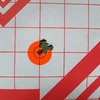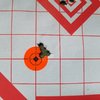Blue68f100
Member
A while back I asked if any were using Starline Rifle brass and how it was working for you. Since I had to return the 200 rounds of Defective Lapua Brass I gave the Starling a go.
I orded 250 6.5 CM Brass with the Small Rifle Primers to test with. Upon arrival I did some quick inspection to see if it meets the standard we have come to love in the pistol brass. The first thing when you open the box it as sheet telling you that you must size the brass. They have put a tarnish inhibitor on the brass after the final cleaning. So you have no idea as to weather these were annealed or not. All the brass was within ±0.001" in length. The shoulder were pushed back to min and maybe just below depending on what your using to measure it. I do not have case gauge for the 6.5 CM, just a simple collar I use for checking position during sizing. Using this gauge all were within a 0.001" of each other. I did a some random checks on 5 pieces for weight, length, volume, wall thickness.
New Starline Brass in 6.5 CM (SRP) Sized with Redding S die w/.288 bushing
Weight was measured by GemPro 250 scales.
OD and ID with my caliper, ID confirmed with pin gauges.
Dry Weight Length H2O Wt OD x ID = Wall
Grains Inches in Grains inches
1 162.24 1.910 51.44 .2885 x .261 = 0.01375
2 163.72 1.912 51.22 .2880 x .260 = 0.014
3 161.82 1.909 51.32 .2885 x .261 = 0.01375
4 163.56 1.911 51.14 .2885 x .261 = 0.014
5 163.20 1.912 51.14 .2885 x .261 = 0.01375
av 162.91 1.9108 51.25
1.16 % Max 0.583 % Max
The bullets I'm using are Sierra's that I got a great buy on last year. I used the Hex Nut Comparator to measure the ogive reference to see what small differences I was going to have between the GK and MK bullets. Normally I find they work well with the same charge. Yet to be determined if this is the case with these bullets.
Sierra 130gr TMK 1.364” L 1.713" = 0.349” distance above
Sierra 130gr HPBT GK 1.195” L 1.737" = 0.542” distance above
0.169” L 0.024” difference in Jump
I did a load workup with RL-17 and Varget. RL-17 I'm still fine tuning on it.
The gun used is a 6.5CM AR that I built. The barrel is from E. Author Brown, 24" Long Range Premium 24" SS Heavy barrel with a 1:8 twist. The barrel extension was nothing but sharp edges every were. If you stuck you finger in and dragged it out it would cut you, it was that bad. I spent 2 hrs dehorned it, still got one place I need to address on brass ejection, snake bite marks. Did not like the way the crown looked but it appears to fine, not the sharp target crown I like. The scope I robbed from my AR-15 heavy barrel Varmint gun that was sporting a Nightforce 8x32 Bench scope. Will be ordering another scope once funds come available for this rifle.

This is the Varget workup, with Sierra recommended OAL of 2.810"
Now the original OAL 2.810" was used per Sierra recommendation. This was a reading of 0.101" on my Redding seating die. I used up 1 box (100) of bullets before getting into a different lot (500). The new lot measured 0.010" longer than the first at the same setting. I did not change my seating die since the ogive was the same as the original. 3 rounds each/ load. I had shot some others to put some heat in the barrel, so it was not cold.
Temp 52F
Wind 10 mph @ 1:00
My home range is fairly protected from a N wind. My range is only 97 yrds long measured by laser range finder. I do have to deal with a heat mirage due to a drop in elevation (~8 deg) to my target. Can be a major pain at times.
Shooting bench with a Lead Sled.
All rounds were hand feed, no magazine. So damage due to feeding is eliminated. Will test that later on. 1 min between 3 shots, 5 min between groups.
CE Crony 15yrds from muzzle. BT to phone
Sierra listed Max at 38.8gr with Varget.

Then I started fine tuning with the OAL. This is where we get a lot of inquires on tuning a load. And is the main reason I'm posting this information. To show OAL does make a difference.
Test Conditions:
62F
5-10 mph wind from the same direction N @ 1:00
1 min between shoot of 5, then a 5 min cool down while I load 5 more rounds.
+ 0.005 only 5 shots
-0.015 only 5 shots

They powder was dispensed using a RCBS ChargeMaster 1500. If a load went over I dumped it back and rerun. Don't know why the ES spread was higher this time, but it does not appear to have hinder the results. Beside I will take a high ES any day as long as whats on paper is consistent. I should add I'm shooting with a wrist splint on my right hand (trigger hand) during this test. So I may have something to do with it.
Sadly I did not record and of the quick checks on the Lapua brass. Mainly because I was not planning on using anything else. And there brass is really consistent.
I orded 250 6.5 CM Brass with the Small Rifle Primers to test with. Upon arrival I did some quick inspection to see if it meets the standard we have come to love in the pistol brass. The first thing when you open the box it as sheet telling you that you must size the brass. They have put a tarnish inhibitor on the brass after the final cleaning. So you have no idea as to weather these were annealed or not. All the brass was within ±0.001" in length. The shoulder were pushed back to min and maybe just below depending on what your using to measure it. I do not have case gauge for the 6.5 CM, just a simple collar I use for checking position during sizing. Using this gauge all were within a 0.001" of each other. I did a some random checks on 5 pieces for weight, length, volume, wall thickness.
New Starline Brass in 6.5 CM (SRP) Sized with Redding S die w/.288 bushing
Weight was measured by GemPro 250 scales.
OD and ID with my caliper, ID confirmed with pin gauges.
Dry Weight Length H2O Wt OD x ID = Wall
Grains Inches in Grains inches
1 162.24 1.910 51.44 .2885 x .261 = 0.01375
2 163.72 1.912 51.22 .2880 x .260 = 0.014
3 161.82 1.909 51.32 .2885 x .261 = 0.01375
4 163.56 1.911 51.14 .2885 x .261 = 0.014
5 163.20 1.912 51.14 .2885 x .261 = 0.01375
av 162.91 1.9108 51.25
1.16 % Max 0.583 % Max
The bullets I'm using are Sierra's that I got a great buy on last year. I used the Hex Nut Comparator to measure the ogive reference to see what small differences I was going to have between the GK and MK bullets. Normally I find they work well with the same charge. Yet to be determined if this is the case with these bullets.
Sierra 130gr TMK 1.364” L 1.713" = 0.349” distance above
Sierra 130gr HPBT GK 1.195” L 1.737" = 0.542” distance above
0.169” L 0.024” difference in Jump
I did a load workup with RL-17 and Varget. RL-17 I'm still fine tuning on it.
The gun used is a 6.5CM AR that I built. The barrel is from E. Author Brown, 24" Long Range Premium 24" SS Heavy barrel with a 1:8 twist. The barrel extension was nothing but sharp edges every were. If you stuck you finger in and dragged it out it would cut you, it was that bad. I spent 2 hrs dehorned it, still got one place I need to address on brass ejection, snake bite marks. Did not like the way the crown looked but it appears to fine, not the sharp target crown I like. The scope I robbed from my AR-15 heavy barrel Varmint gun that was sporting a Nightforce 8x32 Bench scope. Will be ordering another scope once funds come available for this rifle.

This is the Varget workup, with Sierra recommended OAL of 2.810"
Now the original OAL 2.810" was used per Sierra recommendation. This was a reading of 0.101" on my Redding seating die. I used up 1 box (100) of bullets before getting into a different lot (500). The new lot measured 0.010" longer than the first at the same setting. I did not change my seating die since the ogive was the same as the original. 3 rounds each/ load. I had shot some others to put some heat in the barrel, so it was not cold.
Temp 52F
Wind 10 mph @ 1:00
My home range is fairly protected from a N wind. My range is only 97 yrds long measured by laser range finder. I do have to deal with a heat mirage due to a drop in elevation (~8 deg) to my target. Can be a major pain at times.
Shooting bench with a Lead Sled.
All rounds were hand feed, no magazine. So damage due to feeding is eliminated. Will test that later on. 1 min between 3 shots, 5 min between groups.
CE Crony 15yrds from muzzle. BT to phone
Sierra listed Max at 38.8gr with Varget.

Then I started fine tuning with the OAL. This is where we get a lot of inquires on tuning a load. And is the main reason I'm posting this information. To show OAL does make a difference.
Test Conditions:
62F
5-10 mph wind from the same direction N @ 1:00
1 min between shoot of 5, then a 5 min cool down while I load 5 more rounds.
+ 0.005 only 5 shots
-0.015 only 5 shots

They powder was dispensed using a RCBS ChargeMaster 1500. If a load went over I dumped it back and rerun. Don't know why the ES spread was higher this time, but it does not appear to have hinder the results. Beside I will take a high ES any day as long as whats on paper is consistent. I should add I'm shooting with a wrist splint on my right hand (trigger hand) during this test. So I may have something to do with it.
Sadly I did not record and of the quick checks on the Lapua brass. Mainly because I was not planning on using anything else. And there brass is really consistent.






